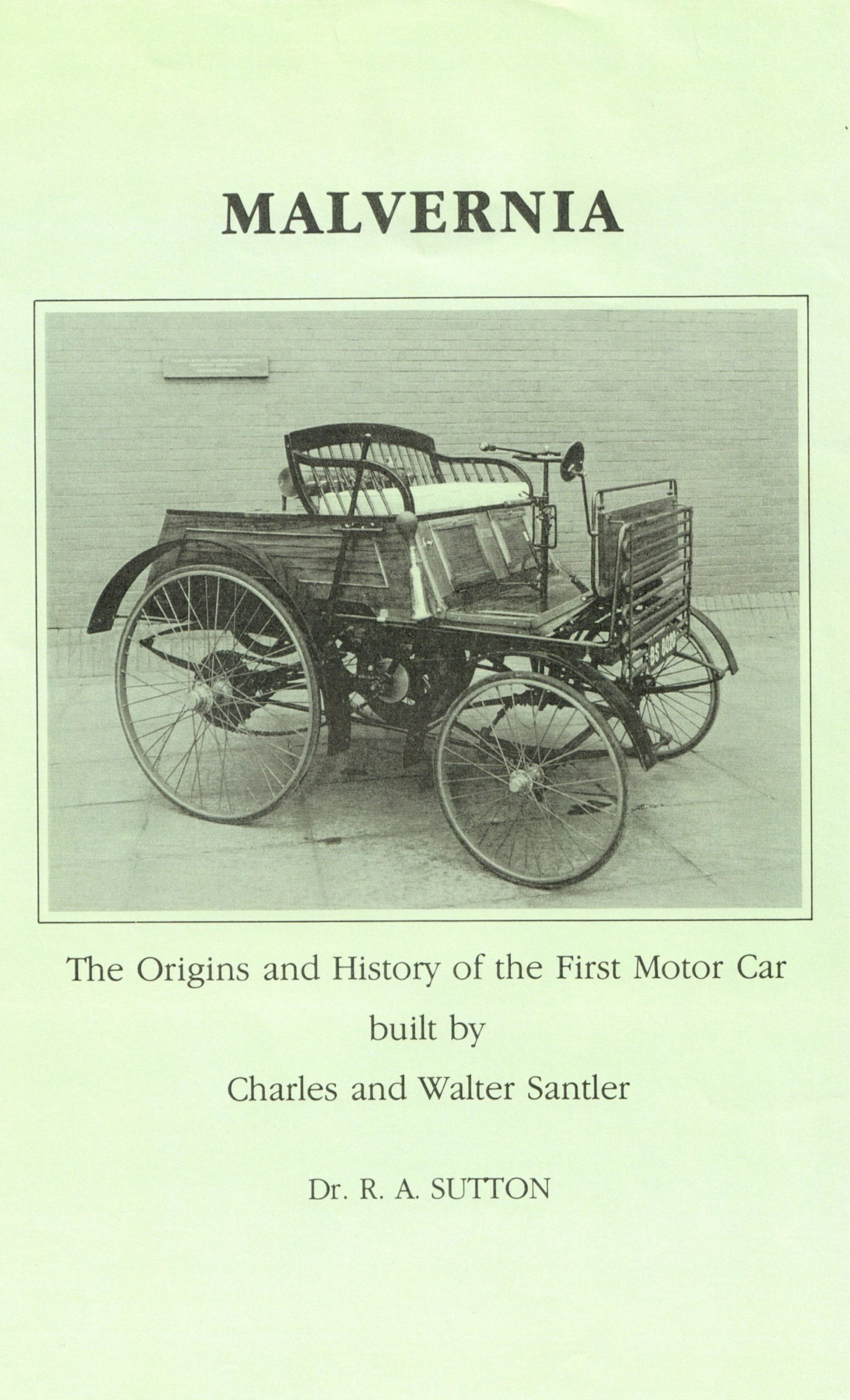
Author: R. A. Sutton
Publisher: Michael Sedgwick Memorial Trust
The origins and history of the first motor car built by Charles and Walter Santler at Northumberland Works, Malvern Link, Worcestershire.
The brothers Charles (1864-1940) and Walter (1867-1942) Santler, cycle makers and general engineers, have a good claim to the title of Britain's first car makers, for they built a steam car in 1889.' – 'The Beaulieu Encyclopaedia of the Automobile'.
Some 20 years before the first Morgan three-wheeler emerged from Malvern, the Santler brothers had built a primitive automobile in this genteel Worcestershire spa town. After training as an engineer, Charles Santler went to work in his father's business in 1885. Established some ten years previously, the Santler company installed steam engines, water wheels, and 'turbeens' (turbines), as well as undertaking general engineering activities. The firm also made bicycles, which it marketed under the 'Malvernia' name.
Around 1887, the brothers commenced the construction of a steam-powered vehicle with a triple-expansion engine and vertical boiler, which was mounted a short rectangular frame, almost four feet wide. According to Charles Santler, this vehicle was run on the roads in 1889, an illegal activity under the provisions of the so-called 'Red Flag Act' of 1865 (amended 1878). This Act required that any mechanically propelled vehicle should be accompanied by a crew of three. As this was something of a problem with a two-seater, the Santlers abandoned their project, removing the steam engine but keeping the chassis and running gear.
Around 1891 or 1892, the chassis was retrieved and a twin-cylinder horizontal gas engine installed, which was supplied from a cylinder of compressed coal gas slung beneath the front of the frame. Evidence for the location of the gas tank is still visible. Such an engine's relatively low power output, and the lack of range conferred by the limited size of the gas tank, made this version no more practical than the first. Once again the unsuitable power unit was discarded, and sometime later a petrol engine was installed, believed to have been a small, vertical, water-cooled single.
Charles Santler later recalled that this latest experiment using the steam car chassis and petrol engine was well before the 'Locomotives on Highways Act' of 1896, which removed many of the existing restrictions. It is believed that the petrol engine was used to power a second experimental motorcar, as reported by the Malvern News in January 1897. A photograph taken around 1907 shows the original Santler automobile laid up in the local blacksmith's yard.
As part of Malvern's celebrations marking the coronation of HM King George V in 1911, the engine-less Santler was removed from storage to take part, being displayed with a notice calling it 'Ye Old Malvern Trackless Car'. A further notice behind invited people to push. A photograph of this occasion survives. The vehicle seems then to have gone back into storage. It was already laid up by the time cars had to be registered and carry an identification number, and was never formally registered by the Santlers.
The Santlers went on to build a few more 'one offs', followed by a limited series of light cars in 1914/1915, these being the first vehicles they ever offered for sale. After WWI they offered the three-wheeled Rushabout, superficially similar to the locally built Morgan. The Rushabout lasted until circa 1922, after which there were no more Santler motorcars.
This short, limited print run book was written by the then-owner of the surviving Santler motorcar. It incorporates everything known about the Santlers and their forays into the motor car business. This remains the only book ever published by the MSMT, who have since decided against repeating such a venture.
Out of print
Published 1987
Price: £
ISBN: #978-1870660006